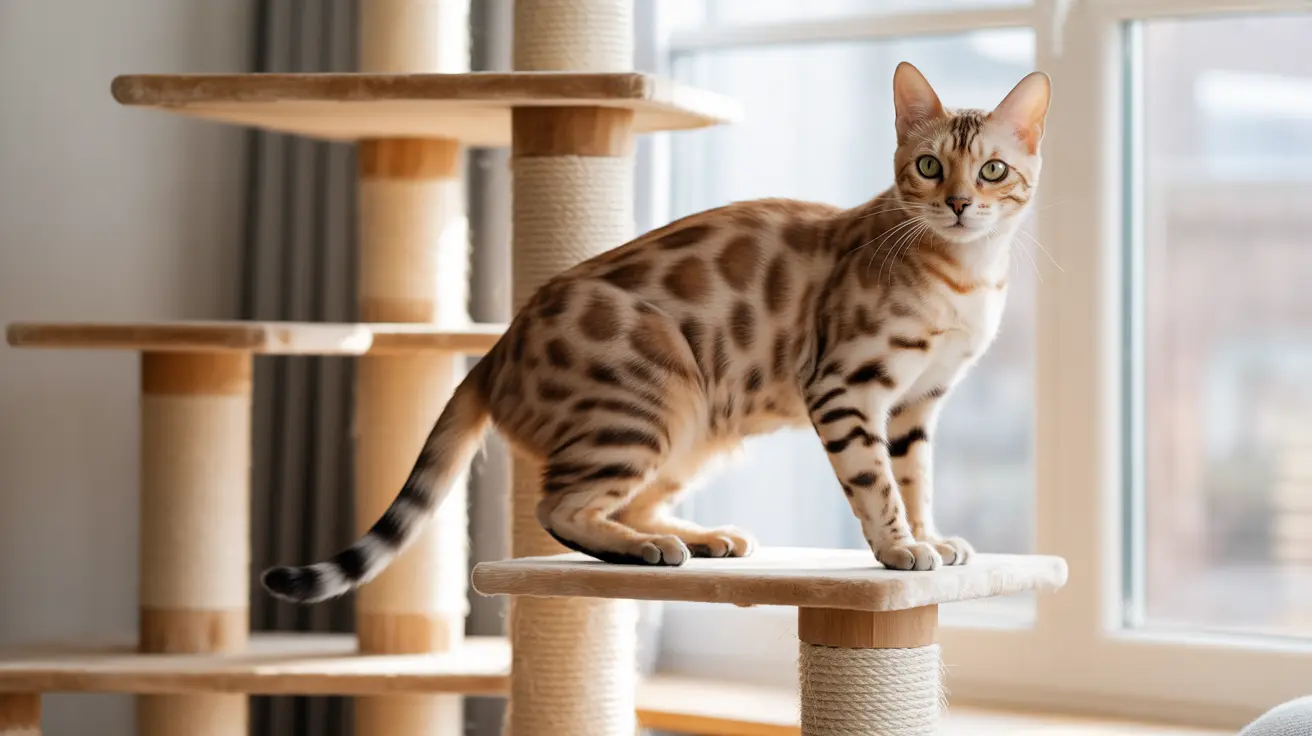Creating the ideal living space for your feline friend involves more than just measuring square footage. While cats are remarkably adaptable creatures, understanding their spatial needs is crucial for their physical and emotional well-being. This comprehensive guide will help you ensure your cat has the perfect amount of space to thrive.
Whether you live in a cozy apartment or a spacious house, the key lies in optimizing your available space to meet your cat's natural instincts and behavioral needs. Let's explore exactly what your cat needs to live their best life.
Understanding Basic Space Requirements
While shelter guidelines often suggest a minimum of 18-20 square feet per cat, this is far from ideal for a permanent living situation. For a truly comfortable home environment, experts recommend at least 200-300 square feet of accessible living area for a single cat.
However, raw square footage only tells part of the story. The quality and arrangement of space often matter more than quantity, especially when properly enriched with cat-friendly features.
The Crucial Role of Vertical Space
Cats are natural climbers and typically utilize space in three dimensions. Vertical space is just as important as floor space, if not more so. Adding cat trees, wall-mounted shelves, and window perches can effectively double or triple your cat's usable living area.
- Survey their environment from safe vantage points
- Exercise their natural climbing instincts
- Escape from stressful situations
- Establish multiple resting spots at different heights
Essential Resource Allocation
Every cat needs dedicated space for their basic resources, including:
- Feeding stations (separate from water bowls)
- Multiple water sources
- Litter box areas (following the n+1 rule: one box per cat plus one extra)
- Scratching posts
- Sleeping areas
- Play zones
These resources should be distributed throughout the available space rather than clustered together, allowing cats to move naturally between different activity areas.
Small Space Solutions
Even in smaller homes, cats can thrive when their environment is thoughtfully designed. Key strategies include:
- Utilizing wall space with mounted shelves and perches
- Installing window seats for outdoor viewing
- Creating cozy hideaways under furniture
- Using multi-functional cat furniture
- Establishing dedicated play areas, even if compact
Multiple Cat Considerations
When housing multiple cats, space requirements increase exponentially rather than linearly. Each cat needs their own territory and access to resources without competition. This means:
- Multiple elevated perches
- Several scratching stations
- Separate feeding areas
- Multiple litter box locations
- Various hiding spots and retreat options
Creating an Enriched Environment
Regardless of size, your cat's space should include opportunities for:
- Exercise and play
- Mental stimulation
- Natural behaviors like scratching and climbing
- Observation of the outdoor environment
- Private relaxation
- Social interaction (on their terms)
Frequently Asked Questions
How much minimum square footage does a single cat need to be comfortable at home?
While experts recommend 200-300 square feet of accessible living space for optimal comfort, cats can adapt to smaller areas when properly enriched with vertical space and appropriate resources.
Why is vertical space important for cats in small living areas?
Vertical space allows cats to exercise their natural climbing instincts, provides escape routes, creates additional territory, and offers vantage points for environmental observation, effectively expanding their usable living area.
How should I arrange resources like litter boxes and feeding stations for multiple cats?
Distribute resources throughout the space, keeping litter boxes away from feeding areas. Follow the n+1 rule for litter boxes, and provide multiple feeding stations to prevent resource guarding and reduce stress.
Can cats be happy in small apartments, and what enrichment do they need?
Yes, cats can be happy in small apartments when provided with proper enrichment, including climbing opportunities, window access, scratching posts, toys, and hiding spots. Quality of space often matters more than quantity.
How does a cat's breed or activity level affect the amount of space they require?
High-energy breeds like Bengals and Abyssinians typically need more space and enrichment than less active breeds. Young cats and those with higher activity levels also require more room for exercise and play.
Conclusion
While the amount of space your cat needs depends on various factors, including their personality, age, and activity level, the quality of their environment matters most. By focusing on creating a rich, multi-level territory with appropriate resources and enrichment, you can ensure your cat thrives in whatever space you have available.
Remember that even in smaller homes, thoughtful arrangement and vertical expansion of space can create an ideal environment for your feline companion. The key is to understand and cater to your cat's natural behaviors and needs, regardless of your home's square footage.






